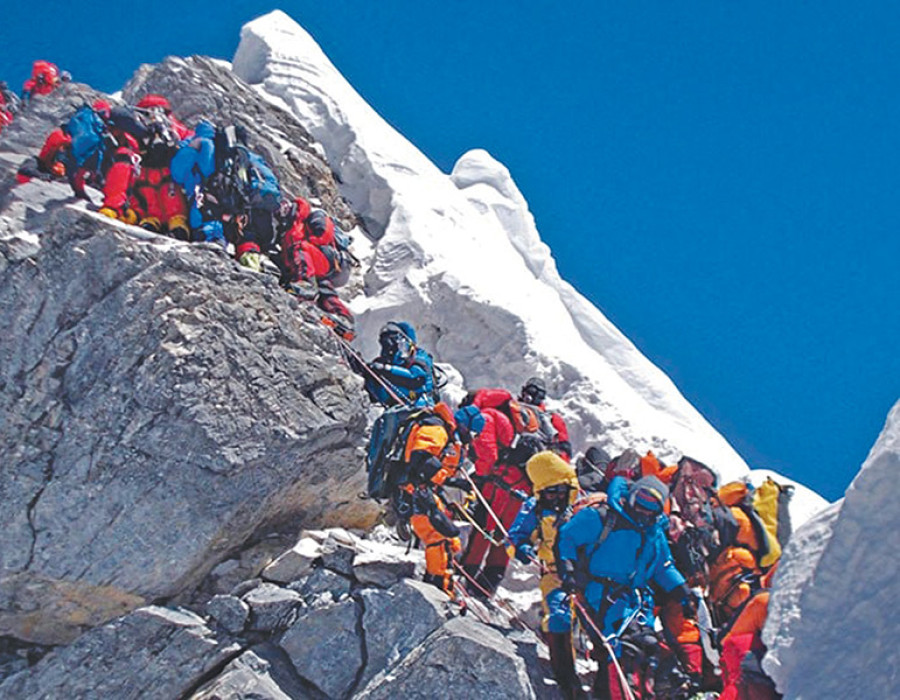Mount Everest Expedition: Navigating a Traffic Jam in the Khumbu Icefall
Ascending Mount Everest is a challenge that demands both physical endurance and mental fortitude. Among the perilous obstacles climbers face, the Khumbu Icefall stands as one of the most notorious. This segment of the Everest climb is fraught with danger due to the ever-shifting glacier, making it a treacherous passage that demands careful navigation. Adding to the complexity is the conundrum of high-altitude traffic jams, where climbers are forced to wait in this hazardous zone, sometimes for extended periods. This article delves into the intricacies of the Mount Everest expedition and sheds light on the phenomenon of traffic jams in the Khumbu Icefall.
The Khumbu Icefall, situated between Everest Base Camp and Camp 1, is characterized by its towering ice seracs, deep crevasses, and a constantly changing landscape. The glacier’s instability makes it a volatile and high-risk area, posing a significant threat to climbers. Seracs, massive ice formations resembling frozen waves, can collapse without warning, triggering avalanches of ice and snow that can engulf climbers. Deep crevasses, hidden beneath fragile snow bridges, present an invisible hazard that can lead to falls of considerable depth. The movement of the glacier itself adds to the unpredictability, as it shifts at an average rate of approximately one meter per day, causing the terrain to evolve continually.
Climbers aiming to conquer Everest must contend with a narrow window of favorable weather conditions. Typically occurring during the spring and autumn, this brief period offers relatively stable weather that is essential for summit attempts. As a result, a multitude of climbers and expedition teams converge on Everest’s slopes during these windows, leading to congested conditions along the route.
The convergence of climbers in the Khumbu Icefall has led to an emerging challenge: traffic jams at high altitude. Climbers often find themselves caught in queues as they wait to navigate tricky sections of the route, such as ladders bridging crevasses or steep ice walls. The inherent dangers of the Khumbu Icefall are amplified when climbers are forced to spend prolonged periods in this zone, exposed to its hazards. The high-altitude environment further exacerbates the risks, as climbers are vulnerable to altitude sickness and exposure to extreme cold.
Traffic jams not only increase the physical demands on climbers but also strain their mental resilience. Prolonged exposure to the harsh elements, coupled with the anticipation of navigating treacherous terrain, can heighten anxiety and fatigue. Additionally, the extended wait times lead to a depletion of valuable resources such as oxygen, further jeopardizing the success of the summit attempt.
Expedition organizers and climbers alike are exploring ways to address the challenges posed by traffic jams in the Khumbu Icefall. These strategies include staggered departure times from base camp, improved communication among teams, and implementing more efficient and secure systems for navigating hazardous sections. Moreover, climbers are encouraged to prioritize safety over the summit, recognizing that turning back when conditions are unfavorable is a prudent choice.
The Mount Everest expedition is an unparalleled feat of human determination and endurance. However, the challenges presented by the Khumbu Icefall and the emerging issue of traffic jams highlight the complex interplay between ambition and safety. As climbers continue to test their limits on the world’s highest peak, it becomes imperative to find a delicate balance between the pursuit of the summit and the preservation of life.
Hits: 6










